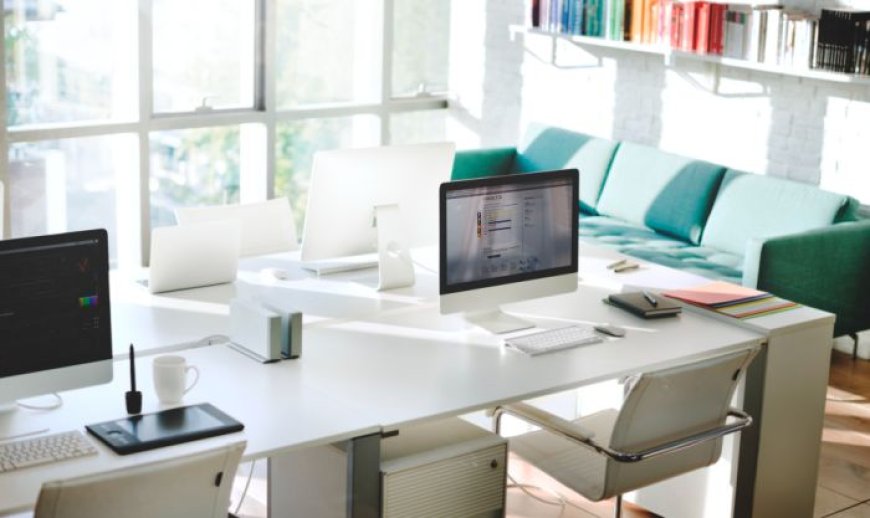Why Cubicles Are Making a Comeback in Today’s Flexible Offices
Discover why cubicles are making a strong comeback in today’s flexible offices. Learn how modern cubicles boost productivity, support hybrid work, and create healthier, more adaptable workspaces.

In recent years, the trend toward open office layouts seemed unstoppable. Companies dismantled walls, removed partitions, and embraced wide-open spaces to encourage communication and collaboration. However, as businesses adapt to hybrid work models, prioritize employee well-being, and seek productivity-enhancing solutions, cubicles are making a surprising and well-deserved comeback.
Modern cubicles are not the dull, claustrophobic setups of the past. They have evolved into versatile, ergonomic, and aesthetically pleasing workspaces designed for todays flexible office environments. In this article, we explore why cubicles are back in style, how they fit into current workplace trends, and what benefits they offer for both employers and employees.
The Shift from Open Offices to Hybrid Workspaces
The rise of open office plans was fueled by a desire for transparency, collaboration, and a sense of community. While this layout worked for some teams, it also introduced new challenges, such as:
-
Increased noise and distractions
-
Lack of privacy
-
Reduced productivity for focus-intensive tasks
-
Higher stress and fatigue levels
With the pandemic and the shift toward remote and hybrid work, companies began re-evaluating how office spaces affect performance and wellness. Thats where cubicles come back into the picturenot as a step backward, but as a smart solution for balancing flexibility and functionality.
How Modern Cubicles Support Flexible Offices
1. Designed for Focus and Privacy
Modern offices need to support different work modesdeep focus, collaboration, and virtual communication. Unlike open desks, cubicles offer semi-private spaces where employees can concentrate without distractions. Adjustable panels, acoustic materials, and personalized layouts make cubicles ideal for hybrid environments.
Employees who come into the office a few days a week want to make the most of their time. Providing cubicles helps them engage in uninterrupted work while still feeling connected to their team.
2. Adaptable to Changing Office Needs
Todays cubicles are modular, which means they can be reconfigured, resized, or relocated based on evolving workplace needs. As more companies adopt hot-desking, shared workstations, or rotating schedules, cubicles can easily accommodate these models.
Whether you're downsizing, expanding, or redesigning your space, cubicles offer flexibility without the cost and permanence of fixed walls or enclosed offices.
3. Enhanced Hygiene and Safety
One of the key learnings from the COVID-19 pandemic is the importance of physical boundaries in reducing the spread of illness. Cubicles provide a natural barrier that limits close contact between employees, making them a safer option than benching systems or open-plan desks.
Some modern cubicles even come with antimicrobial surfaces, easy-to-clean materials, and spacing configurations that comply with health and safety guidelines.
4. Improved Acoustics and Reduced Noise Pollution
Noise is one of the top complaints in open offices. Constant chatter, phone calls, and background noise can severely impact concentration. With the rise of video conferencing, the need for quiet work areas has become more urgent.
Cubicles help reduce noise by acting as sound barriers, allowing employees to conduct virtual meetings or focused work without disturbing othersor being disturbed themselves.
The Modern Cubicle: Sleek, Functional, and Employee-Centric
Todays cubicles have shed their reputation for being boxy and boring. Manufacturers now offer a variety of options that combine style, function, and comfort.
Key Features of Modern Cubicles:
-
Low-profile walls for visibility and natural light flow
-
Adjustable-height desks for ergonomic comfort
-
Built-in storage and cable management
-
Technology integration like power outlets and USB ports
-
Custom color schemes and finishes to match brand identity
These design improvements ensure that cubicles blend seamlessly with contemporary office aesthetics and contribute to a more enjoyable work experience.
Cubicles vs. Open Offices: Which Is Better?
The debate between cubicles and open office plans is no longer black and white. The most effective workplaces now incorporate elements of both. Heres a side-by-side comparison:
| Feature | Open Office | Cubicles |
|---|---|---|
| Collaboration | High | Moderate |
| Privacy | Low | High |
| Distraction | High | Low |
| Personal Space | Minimal | Defined |
| Flexibility | Moderate | High (if modular) |
| Noise Control | Poor | Good |
The takeaway? While open spaces support teamwork,cubicles are better suited for individual tasks and privacy. A hybrid layout that includes both zones is often the most effective solution.
Cubicles and Hybrid Work: The Perfect Pair
With the shift toward hybrid work schedules, offices no longer need assigned seating for every employee. Instead, they need a mix of flexible workstations, quiet zones, and meeting areas.
Cubicles are perfect for:
-
Hot-desking setups: Employees can reserve a cubicle when in the office.
-
Private calls or video meetings: Enclosed cubicles offer a quiet environment.
-
Task-based seating: Employees can choose a space based on their activitycollaborate in open areas or focus in cubicles.
This flexibility allows companies to reduce real estate costs while still offering a productive and supportive workplace.
Industries Benefiting from the Cubicle Comeback
Certain industries benefit more than others from the privacy and structure that cubicles provide. These include:
-
Finance & Accounting: Quiet, secure workspaces are essential for handling sensitive data.
-
Healthcare Admin: Scheduling and billing departments require focus and limited distractions.
-
Legal Firms: Confidentiality and concentration are top priorities.
-
Call Centers: Noise control and individual space help improve performance.
-
Tech & Software Development: Programmers and developers often prefer undisturbed environments.
For these sectors, the comeback of cubicles is not just a trendits a necessity.
Eco-Friendly and Sustainable Cubicle Options
In addition to function and comfort, businesses are becoming more conscious of sustainability. Many modern cubicles are manufactured with:
-
Recycled materials
-
Low-VOC finishes
-
Sustainable wood products
-
Remanufactured frames and panels
Choosing environmentally friendly cubicles can reduce your companys carbon footprint while still delivering high-quality, durable workspace solutions.
Tips for Successfully Integrating Cubicles into Your Office
If you're considering adding or reintroducing cubicles into your workspace, follow these best practices:
-
Assess Workflow Needs Determine how much collaboration vs. individual work is required.
-
Choose Modular Systems Ensure your cubicles can be reconfigured as your needs change.
-
Allow for Natural Light Use low panels or glass partitions to keep the space bright.
-
Invest in Ergonomics Provide adjustable chairs, desks, and monitor arms.
-
Blend Cubicles with Open Spaces Create a balanced environment with break areas and collaboration zones.
-
Encourage Personalization Let employees make their space comfortable and unique.
Conclusion: Cubicles Are Backand Better Than Ever
In the race to design the ideal office, flexibility, wellness, and productivity take center stage. Cubicles check all these boxes, offering adaptable, affordable, and employee-friendly solutions for todays evolving workplace.
No longer confined to the outdated models of the past, modern cubicles support hybrid work, enhance focus, and contribute to safer, more functional office environments. As businesses look to create spaces that work for everyone, cubicles are poised to remain a central feature in the modern office for years to come.






































